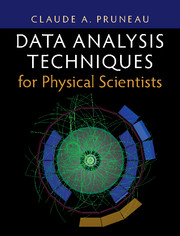13 - Monte Carlo Methods
from Part III - Simulation Techniques
Published online by Cambridge University Press: 24 October 2017
Summary
Modern science deals with increasingly challenging and complex systems. While relatively simple mathematical models can often be formulated, their implementation for the description of real-world systems is typically not amenable to analytical solutions. For instance, one may wish to “evolve” the state of a system (e.g., in a microscopic model of nucleusnucleus collisions) with time to study its many configurations or one may want to calculate the acceptance of a large detector for the study of particles produced by elementary particle collisions (proton–proton or heavy ion collisions at the Large Hadron Collider), and so on. The number of states, configuration, or variables may, however, be prohibitively large, or the boundary conditions of the problem very complex, so it is not possible to sample or integrate the full configuration of the phase space of a system by conventional integration techniques. In these instances, it is possible to resort to Monte Carlo methods to sample the many possible states of the system or to obtain the integral of arbitrary functions over the system's configuration or phase space.
We begin our description of Monte Carlo methods with a short discussion of the principles of the method in § 13.1. We then show, in § 13.2, that Monte Carlo simulations essentially amount to a form of integration that can be most effectively used to compute multidimensional integrals. The notion of pseudorandom numbers and basic techniques commonly used for the generation of pseudorandom numbers are then presented in § 13.3. Selected examples of basic applications are introduced in § 13.4. More elaborate techniques for applications in nuclear sciences are presented in Chapter 14.
Basic Principle of Monte Carlo Methods
Monte Carlo methods use “chance” or more properly said random numbers to sample all possible states of a system. The name Monte Carlo is inspired from games of chance played at the famous Monte Carlo casinos in Monaco, located south of France. The concept and first implementation of the method originates from Los Alamos National Laboratory, New Mexico, where mathematicians John von Neumann and Stanislaw Ulam, working on the Manhattan Project in the 1940s, proposed carrying out theoretical calculations of radiation shielding using experimental modeling on a computer based on chance.
- Type
- Chapter
- Information
- Data Analysis Techniques for Physical Scientists , pp. 643 - 662Publisher: Cambridge University PressPrint publication year: 2017

